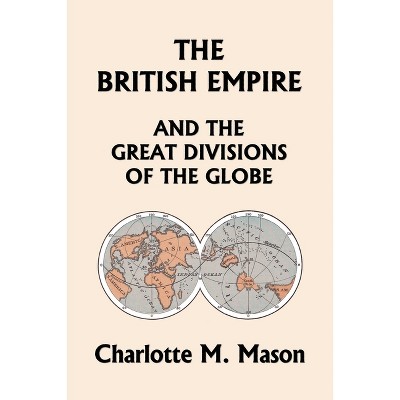Sponsored

Digital Divisions - by Matthew H Rafalow
$26.00
In Stock
Eligible for registries and wish lists
Sponsored
About this item
Highlights
- In the digital age, schools are a central part of a nationwide effort to make access to technology more equitable, so that all young people, regardless of identity or background, have the opportunity to engage with the technologies that are essential to modern life.
- About the Author: Matthew H. Rafalow is a visiting scholar at the University of California, Berkeley's Center for Science, Technology, Medicine, and Society and a social scientist at Google.
- 224 Pages
- Education, Secondary
Description
About the Book
"As schools catch up to the digital age, they are part of a nationwide effort to close gaps in access to technology, also known as the "digital divide," so that young people from all parts of society have the opportunities that access to technology provides. Most students, however, already come to school with digital knowledge honed through activities with friends online. In Digital Divisions, Matthew H. Rafalow reveals that these digital skills are classified differently based on students' race and class. Through case studies at middle schools serving, variously, affluent, middle-income, and low-income students, Rafalow explores how schools produce users of digital technology. Teachers working to bring tech into the classroom regularly treat affluent white students as "innovators" and Asian Americans as "hackers." Poor and Latinx students were rarely recognized for their creative digital skills and were treated either as benign immigrant workers or, worse yet, troublemaking future gang members. He finds that, in their interactions with peers, students at all three schools use digital technology in sophisticated and creative ways. However, only the teachers in the school serving (mostly white) affluent students help translate the skills students develop through their digital play into educational capital. Closing the digital divide, Rafalow shows, is about much more than access: it's about attitudes"--Book Synopsis
In the digital age, schools are a central part of a nationwide effort to make access to technology more equitable, so that all young people, regardless of identity or background, have the opportunity to engage with the technologies that are essential to modern life. Most students, however, come to school with digital knowledge they've already acquired from the range of activities they participate in with peers online. Yet, teachers, as Matthew H. Rafalow reveals in Digital Divisions, interpret these technological skills very differently based on the race and class of their student body. While teachers praise affluent White students for being "innovative" when they bring preexisting and sometimes disruptive tech skills into their classrooms, less affluent students of color do not receive such recognition for the same behavior. Digital skills exhibited by middle class, Asian American students render them "hackers," while the creative digital skills of working-class, Latinx students are either ignored or earn them labels troublemakers. Rafalow finds in his study of three California middle schools that students of all backgrounds use digital technology with sophistication and creativity, but only the teachers in the school serving predominantly White, affluent students help translate the digital skills students develop through their digital play into educational capital. Digital Divisions provides an in-depth look at how teachers operate as gatekeepers for students' potential, reacting differently according to the race and class of their student body. As a result, Rafalow shows us that the digital divide is much more than a matter of access: it's about how schools perceive the value of digital technology and then use them day-to-day.Review Quotes
"Barbas's rich biography illuminates much about this important figure and his role in the creation of modern freedom of expression in the United States."-- "History"
"In Digital Divisions: How Schools Create Inequality in the Tech Era, Matthew Rafalow takes us into middle-school classrooms in three different schools to reveal how teachers use technology in the classroom and how school cultures and race shape that treatment . . . Readers interested in educational equity, racial stereotypes, organizational cultures, and technology will all find keen insights and experience 'a-ha' moments while reading this compelling book."-- "Contemporary Sociology"
"Digital Divisions provides a robust and critical framework to understand digital technologies in the institutional reproduction of inequalities. . . . It deepens conversations in the sociology of education and youth culture, as well as the complex and evolving role of digital technologies in processes of social stratification. The book will have pedagogical appeal for courses in the sociology of education, youth, or digital society. Timely and well argued, Digital Divisions showcases the enduring power of sociological theories of inequality for a digital age."-- "American Journal of Sociology"
"Timely and well argued, Digital Divisions showcases the enduring power of socio-logical theories of inequality for a digital age."-- "The University of Chicago, Press"
"Considers the ways educational institutions cultivate innovators, explaining how disciplinary orientations to digital youth culture and play come from a complex mixture of perceptions and expectations within the school setting."-- "Journal of Economic Literature"
"Generally, educators believe that the 'digital divide' pertains to deficits related to internet access and access to hardware associated with digital technologies. This work suggests, however, that the technology skills gap experienced by minority populations is tied to teacher biases with respect to race and class, the prevailing school culture, and educator attitudes about student online interactions with peers and play in general. . . . Highly recommended."-- "Choice"
"Beautifully written, shrewdly researched, and artfully argued."-- "The Arts Fuse"
Digital Divisions is an excellent and timely book on the importance of play in cultivating engagement with technology and promoting innovative thinking among students. Using observations of classrooms and interviews with teachers and students, Rafalow argues that the technological divide is less about the differences in access to hardware, but more about how the use of technology is judged by teachers. Stereotypes of Asian Americans as cut-throat or model minorities and of Latinx students as benevolent immigrants or potential gang members promote the disciplining of their play. White middle and upper-middle class students are free from such constraints and thus their play is tolerated or even encouraged. This is a valuable study and a must-read for anyone interested in the interaction between technology, race, and class in affecting inequality in today's schools.--Grace Kao, Yale University
Digital Divisions reveals the racialized and classed dimensions of the digital divide that can't be fixed by simply putting devices in the hands of all students...Rafalow highlights the way school cultures and teachers' raced and classed expectations contribute to the reproduction of inequality and the digital divide.--Stacey J. Lee, University of Wisconsin-Madison
Keenly observed, concisely written and deftly theorized. Rafalow does a great deal to update the sociology of education for the digital present. I will read and discuss this book with my students for some time.
--Mitchell Stevens, Stanford University
The origins and impact of digital inequality is more complex than just who can get their hands on a machine...Digital Divisions offers a timely intervention in the heated debates about technology in schools, arguing that cultural notions of race, inequality and the meaning of kids' play shape the digital divide that we yet face.
--Allison J. Pugh, University of Virginia
Theoretically sophisticated, superbly written, and effectively argued, Digital Divisions shines a bright light on one of the most vexing problems of our time. A must read.--Roberto G. Gonzales, Harvard University
This is a critical book for educators, educational scholars, and those concerned with democratizing access to technology. Beautifully written and meticulously researched, Digital Divisions, captures the complicated reality of how race and class dynamics shape children's access to the full benefits of our digital reality.--Amanda E. Lewis, University of Illinois at Chicago
"Digital Divisions focuses on whether, and in what ways, schools prepare students for the Digital Age. The book offers a novel analysis by uncovering social inequities in how technology is used in schools and how student race, class, and organizational cultures shape the extent to which--and how--digital play is valued and incorporated into the everyday practices of teaching and learning. [. . .] As [Rafalow] notes in the conclusion, researchers may miss key forms of inequities in education if we simply focus on access to technology or the mere presence of digitally-oriented instruction while ignoring how it's used in the day-to-day workings of schools."--Linn Posey-Maddox, University of Wisconsin, Madison
"Digital Divisions [offers an] interesting peek inside three schools and [. . .] the ways that the race and class of the student body seems to shape the schools' relationships with technology. At the most elite, predominantly white school [Rafalow studies], teachers encourage 'play' and deep engagement with technology, and students learn to craft professional digital selves. They envision themselves as creators of content, not just consumers. At the predominantly Asian school, surveillance dominates the school's relationship with technology--students are seen as dangerous hackers, and they are intensely policed in their technology usage. At the third, predominantly Latinx school, teachers hold a patronizing stance toward students, and use technology for basic skills improvement. The 'play' aspect of technology is seen as irrelevant to these students. [. . . D]espite these three schools having comparable technology resources and on the surface not showing a digital divide, [Digital Divisions shows that] what happens in the usage of that technology is most certainly unequal."--Natasha Warikoo, Tufts University
About the Author
Matthew H. Rafalow is a visiting scholar at the University of California, Berkeley's Center for Science, Technology, Medicine, and Society and a social scientist at Google. This is his first book.Dimensions (Overall): 8.5 Inches (H) x 5.5 Inches (W) x .46 Inches (D)
Weight: .57 Pounds
Suggested Age: 22 Years and Up
Number of Pages: 224
Genre: Education
Sub-Genre: Secondary
Publisher: University of Chicago Press
Format: Paperback
Author: Matthew H Rafalow
Language: English
Street Date: August 12, 2020
TCIN: 1006097105
UPC: 9780226726694
Item Number (DPCI): 247-40-7504
Origin: Made in the USA or Imported
If the item details aren’t accurate or complete, we want to know about it.
Shipping details
Estimated ship dimensions: 0.46 inches length x 5.5 inches width x 8.5 inches height
Estimated ship weight: 0.57 pounds
We regret that this item cannot be shipped to PO Boxes.
This item cannot be shipped to the following locations: American Samoa (see also separate entry under AS), Guam (see also separate entry under GU), Northern Mariana Islands, Puerto Rico (see also separate entry under PR), United States Minor Outlying Islands, Virgin Islands, U.S., APO/FPO
Return details
This item can be returned to any Target store or Target.com.
This item must be returned within 90 days of the date it was purchased in store, shipped, delivered by a Shipt shopper, or made ready for pickup.
See the return policy for complete information.











